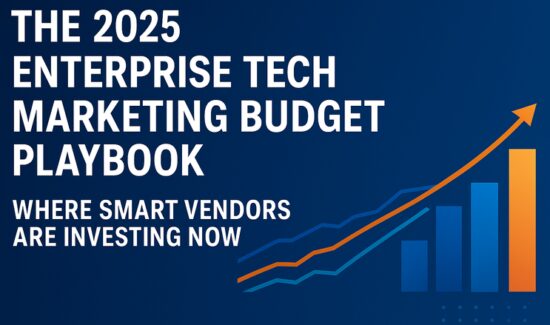Leveraging the Modern B2B MarTech Stack to Enhance ABM


As part of Solutions Review’s Contributed Content Series—a collection of articles written by industry thought leaders in maturing software categories—Stephanie Capouch, the VP of Marketing at Terminus, explains how companies can expand and improve their account-based marketing (ABM) efforts with a modern B2B MarTech stack.
Many of today’s marketing professionals wear multiple hats, so it’s become a standard expectation to do more with less while maintaining high-quality results. However, generating opportunities and providing better brand experiences requires marketers to do the opposite and focus on their skills on a few select things. One suite of tools is specifically designed to help companies do this, and it’s their MarTech stack.
With the right MarTech stack, marketing teams can connect with prospects at deeper levels, build relationships with existing customers, and increase opportunities by equipping engagement channels (i.e., email, digital advertising, conversational marketing, website personalization) with automation technology. These B2B marketing tools are built and connected on the foundational element of accurate, targeted data.
Amping Up Your ABM Game
When push comes to shove, B2B companies usually default to the pipeline, which can cause marketers to lose sight of their bottom-of-the-funnel customers and the strategies required to reach them. Casting a broader net to generate opportunities doesn’t magically convert prospects into paying customers. The same goes for “batch and blast” tactics, which rely more on talking than listening and, as a result, aren’t reliably effective. It’s more important than ever for marketers to listen—via data and multi-channel conversations—and commit to understanding their customers’ pain points.
Spray and pray strategies just don’t work well. Even if they generate opportunities, they’re often low quality and unlikely to convert. To strategically drive demand that converts to revenue, today’s marketers should:
- Define and focus on ideal customer profiles.
- Meet customers where they are.
- Leverage accurate buyer intent data.
- Prioritize personalization and experiences, pivoting to make the buying process more about the customer than the brand.
Brands spend billions of dollars on marketing yet only earn conversion rates of about 1-percent. To improve that ROI, marketers should look to their B2B MarTech stack. Companies must invest in tools that help marketers identify previously anonymous website traffic and predict where customers or opportunities want to go next on their journey—whether it involves specific marketing content or a sales/product-specific conversation.
Modern MarTech stacks are all about integration. By not siloing data to one platform, marketing teams can use it in other parts of the stack, like Google Ads, CRMs like Salesforce, or customer success platforms like Gainsight or Zendesk. When marketing, revenue, customer success, and support teams access the information they need, they all become more effective because they can see the complete picture of each account. And then, teams can better close more deals, drive expansion, and prevent churn.
The Emergence of the MarTech Cloud Automation
Today’s marketing tools help marketers gather, synthesize and analyze a plethora of data to identify customers and opportunities and move them through the funnel. Many companies use AI or automation to collect and analyze data and streamline marketing processes while offering marketers insights on reaching and engaging target accounts most effectively.
Currently, about 49-percent of companies leverage marketing automation, with 55-percent of B2B companies adopting the technology. The top B2B performers are 20-percent more likely than average to use a marketing automation strategy, and 61-percent of marketers identified high-quality lead generation as their primary challenge.
With that in mind, consider how many marketers cite results-driven account-based marketing (ABM) as the solution for delivering a higher ROI. ABM might be a long game, but it improves business results over time. And by combining marketing automation with ABM and viewing it as an all-encompassing MarTech cloud, marketing teams become empowered to hyper-target outreach based on each customer or lead’s interests and actions.
For example, marketing automation drives ABM efforts by:
- Tagging and segmenting accounts to differentiate one from another based on whatever criteria—demographics, product needs, place in the funnel—make sense.
- Making it easier to set up automation workflows for various interactions, whether sending email newsletters to potential customers, using chatbots to initiate a conversation, setting up meetings, or pre-qualifying prospects.
- Customizing content to deliver the right message to the right audience at the right time based on their previous interactions with your company.
- Conducting A/B tests to measure success, via B2B-centric metrics, for each stage of the funnel.
The modern B2B MarTech stack can take unplanned and unstructured information, save it in more structured, organized ways, and enable marketers to move more quickly with authority, leveraging that data to accomplish all their objectives. Using these tools in close coordination with holistic, multi-channel ABM helps marketers focus on their ideal customers, leading to making wiser decisions, differentiating marketing approaches, and impacting revenue growth more effectively.





















